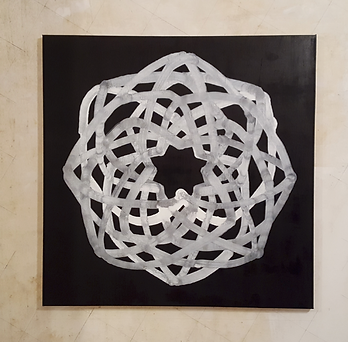Marie Cloquet
TRAVELING LIGHT
08/09/2019 - 20/10/2019
Marc Rossignol
Synchrone
Opening Sunday 9 September 2018
Marc Rossignol
Synchrone
Opening Sunday 9 September 2018
Marc Rossignol
Synchrone
Opening Sunday 9 September 2018
Marc Rossignol
Synchrone
Opening Sunday 9 September 2018
Herman Van Ingelgem
Foreign Bodies & Protheses
06/09/2021 - 17/10/2021
A string is knotted to form a circle, then a play of finger movements knots the thread into shapes and patterns commonly called string figures. The exhibition lays out a string game for multiple players. It is an invitation to tune into different understandings of colour, delving into the intertwining dynamics that tie human and other-than-human beings in relation to one another. Organisms constantly release, share and are traversed by colours. In recounting these passages, Sina Hensel’s narrative strategy is akin to the practice of making string figures that Donna Haraway describes as a way of composing multispecies storytelling’ or ‘multispecies worlding’.1 Relationship is at the center of how Hensel envisages the process of making, where each step reminds us that - to use Haraway’s words again - ‘[n]atures, cultures, subjects, and objects do not preexist their intertwined worldings.’2 Departing from an understanding of the environment as a set of relations, the exhibition brings together traces and devices of colour-shifting processes that reveal how changes in pigmentation are entangled with dynamics of care and nurture but
also serve as warning signals of affliction and distress. (...)
1 Donna J. Haraway, Staying with the Trouble, Making Kin in the Chtulucene, Duke University Press: Durham and London, 2016, p.10., 2 Ibidem, p.13
Sofia Dati
.png)
.png)
